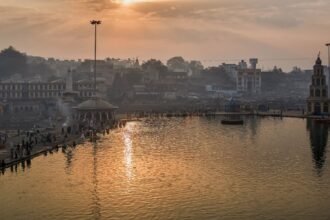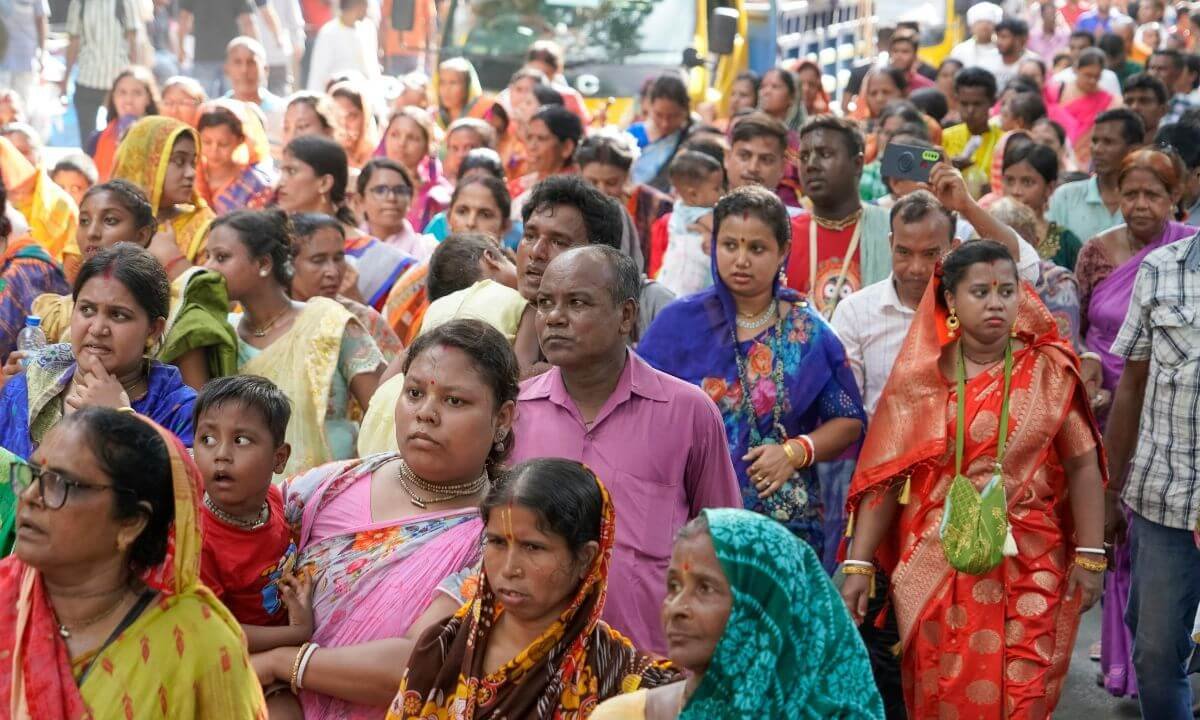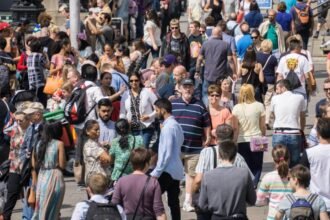The Kumbh Mela is a mega spiritual festival that draws millions of people, including more and more women from India and around the world. In recent years, protecting women safety at Kumbh Mela has become a primary emphasis for authorities and spiritual organisations alike.
Kumbh 2027 will show both spiritual tradition and social progress, from the addition of women-only tents and support desks to the rise of women-led satsangs. This blog talks about how the world’s biggest religious gathering is putting women’s safety, dignity, and empowerment first.
Read more : Virtual Kumbh Mela 2027: Digital Pilgrimage & Innovations
More and more women are taking part in the Kumbh
Women have always played a significant role in pilgrimages. They have led bhajans, done ceremonies, and even taught people about spirituality. However, the numbers have increased significantly over the last twenty years.
In Kumbh Mela 2027 (Nashik), predictions say that 40–45% of the pilgrims could be women. This could include:
Sadhvis from women-only Akharas
Devotees from rural and urban areas
International spiritual seekers
Women saints and gurus leading discourse camps
As more people come to the Kumbh Mela, it is important to make sure that ladies are secure.
Tents and camps just for women
One of the most obvious efforts towards keeping women safe at the Kumbh Mela is making special areas just for women pilgrims.
Features include:
Women-only tents with secure entrances are some of the features.
CCTV surveillance and the presence of female security guards
Separate bathing places on big ghats like Kushavarta and Ramkund
Restrooms and changing rooms that are clean and well-lit
These places ensure that people can be alone, comfortable, and at ease, which is especially important for women travelling alone, older women, and mothers with young children.
Emergency helplines and quick response teams
There are going to be a lot of women-only helplines and QR-based apps for Kumbh 2027 to make things safer and deal with problems quickly.
Key Services: Women’s Helpline Desks open 24 hours a day, 7 days a week at major campgrounds and ghats
QR code wristbands with the camp address and emergency contact information
Police patrols with female policemen in uniform
Rapid-response vans are sent to areas with a lot of traffic.
In case of an emergency, the government is partnering with NGOs to help with anything from medical care to trauma counselling.
Satsangs and cultural events led by women
At the Kumbh, empowerment isn’t just about protection; it’s also about being involved and leading spiritually.
Women saints from Akhil Bharatiya Sant Samiti and other ashrams are putting together:
Satsangs and talks just for ladies
Workshops on feminine spirituality, yoga, and healing from within
Panel discussions about the environment, education, and dharma from a woman’s point of view
These gatherings provide welcoming spaces that honour women not only as followers but also as keepers of spiritual wisdom.
Campaigns to raise awareness and watchfulness in the community
Before Kumbh 2027, there are campaigns to raise awareness and teach:
Male volunteers and pilgrims about how to act with respect
Women who are there about safety resources that are available
Camp organisers about infrastructure that is responsive to gender
Flyers, banners, mobile announcements, and digital outreach will make sure that the message of “Respect, Protect, Empower” gets to every part of the Mela grounds.
Tales of Bravery: Voices from Old Melas
In past Kumbh Melas, there have been many stories of women taking charge, leading processions, doing seva (service), and setting up camps.
A group of Naga Sadhvis led their own Shahi Snan at the Prayagraj Kumbh in 2019.
In 2015, a group of women from Maharashtra conducted a successful volunteer kitchen in Nashik.
In Haridwar 2010, female paramedics set up first-aid tents at the ghats.
These examples show that women at Kumbh aren’t just passive participants; they actively affect the event.
Conclusion
The Kumbh Mela’s future depends on spiritual progress that includes everyone, and attempts to keep women safe at the Kumbh Mela are at the centre of this change. Female pilgrims are now at the centre of the Mela’s changing story, from safe places to stay and digital helplines to cultural representation and leadership roles.
One thing is evident as Nashik gets ready for Simhastha 2027: the Kumbh is more than just a holy meeting of rivers. It’s also a meeting of devotion, diversity, and respect for all genders.





